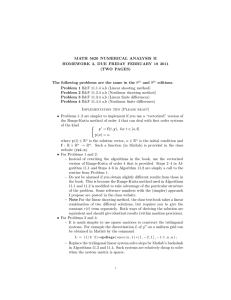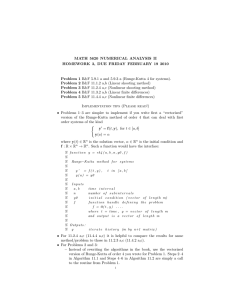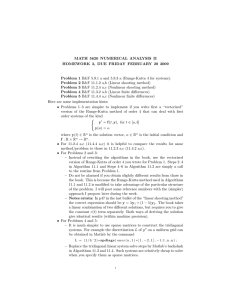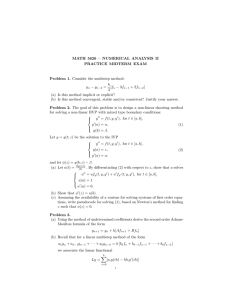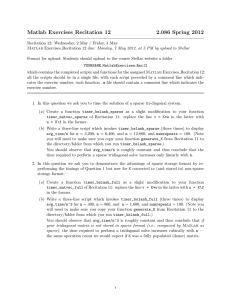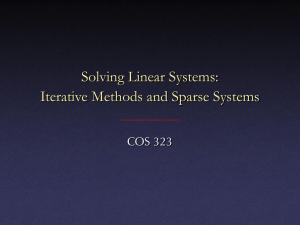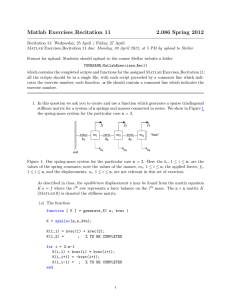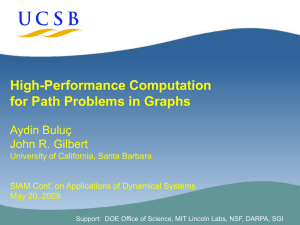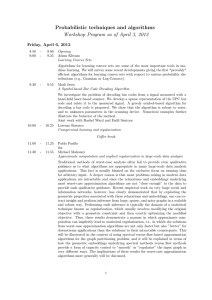MATH 5620 NUMERICAL ANALYSIS II (TWO PAGES)
advertisement
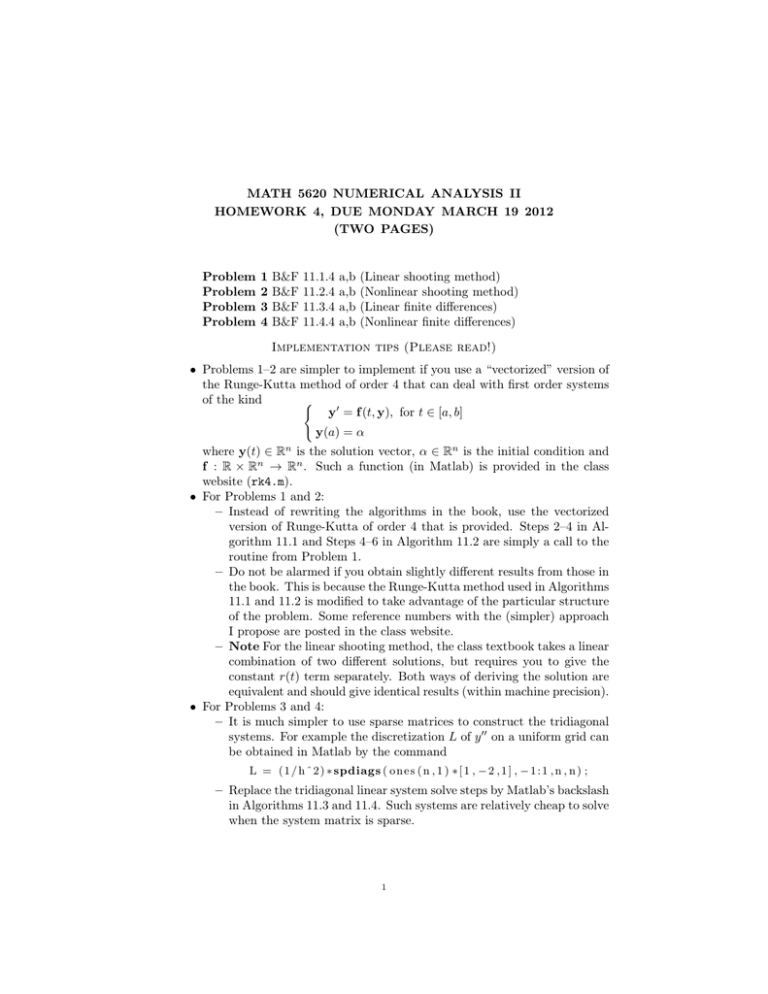
MATH 5620 NUMERICAL ANALYSIS II HOMEWORK 4, DUE MONDAY MARCH 19 2012 (TWO PAGES) Problem Problem Problem Problem 1 2 3 4 B&F B&F B&F B&F 11.1.4 11.2.4 11.3.4 11.4.4 a,b a,b a,b a,b (Linear shooting method) (Nonlinear shooting method) (Linear finite differences) (Nonlinear finite differences) Implementation tips (Please read!) • Problems 1–2 are simpler to implement if you use a “vectorized” version of the Runge-Kutta method of order 4 that can deal with first order systems of the kind ( y0 = f (t, y), for t ∈ [a, b] y(a) = α n where y(t) ∈ R is the solution vector, α ∈ Rn is the initial condition and f : R × Rn → Rn . Such a function (in Matlab) is provided in the class website (rk4.m). • For Problems 1 and 2: – Instead of rewriting the algorithms in the book, use the vectorized version of Runge-Kutta of order 4 that is provided. Steps 2–4 in Algorithm 11.1 and Steps 4–6 in Algorithm 11.2 are simply a call to the routine from Problem 1. – Do not be alarmed if you obtain slightly different results from those in the book. This is because the Runge-Kutta method used in Algorithms 11.1 and 11.2 is modified to take advantage of the particular structure of the problem. Some reference numbers with the (simpler) approach I propose are posted in the class website. – Note For the linear shooting method, the class textbook takes a linear combination of two different solutions, but requires you to give the constant r(t) term separately. Both ways of deriving the solution are equivalent and should give identical results (within machine precision). • For Problems 3 and 4: – It is much simpler to use sparse matrices to construct the tridiagonal systems. For example the discretization L of y 00 on a uniform grid can be obtained in Matlab by the command L = ( 1 / h ˆ 2 ) ∗ spdiags ( o n e s ( n , 1 ) ∗ [ 1 , − 2 , 1 ] , − 1 : 1 , n , n ) ; – Replace the tridiagonal linear system solve steps by Matlab’s backslash in Algorithms 11.3 and 11.4. Such systems are relatively cheap to solve when the system matrix is sparse. 1 2 MATH 5620 NUMERICAL ANALYSIS II HOMEWORK 4, DUE MONDAY MARCH 19 2012 (TWO PAGES) – The behavior of spdiags can be tricky if your sub/super diagonals vary. This matlab code: Q = [ 1 3 0 2 3 −1 3 3 −2 0 3 −3 ] ; A = spdiags (Q, − 1 : 1 , 4 , 4 ) ; constructs the matrix with entries: 3 −1 1 3 −2 A= 2 3 −3 3 3 So spdiags uses only the upper part of subdiagonals and the lower part of superdiagonals. – If you do not want to use spdiags you can create an n by n all zeros sparse matrix with A=sparse(n,n); and then fill it entry by entry (with a for loop).
